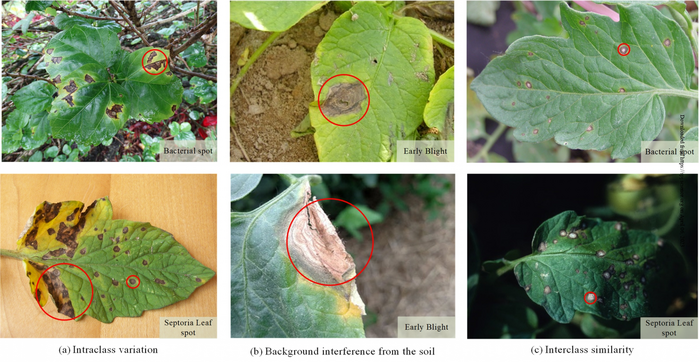Plant diseases have posed a major threat to farmers since the early days of agriculture. Today, despite our improved understanding of the causes and treatment of these diseases, they continue to cause significant economic losses. Although detecting plant diseases early is a farmer’s best bet to minimize their impact, manual inspection of each plant is a monumental task and is prone to errors. Only a well-trained eye can accurately tell the difference between diseases that cause similar symptoms.
 Plant diseases can cause major economic losses and detecting them early is important. Machine learning models can be used for this, but current models need to be improved upon. In a recent study, researchers developed a new model architecture that efficiently deals with the problems faced by previous machine learning models. Image Credit: Professor Guoxiong Zhou from Central South University of Forestry and Technology
Plant diseases can cause major economic losses and detecting them early is important. Machine learning models can be used for this, but current models need to be improved upon. In a recent study, researchers developed a new model architecture that efficiently deals with the problems faced by previous machine learning models. Image Credit: Professor Guoxiong Zhou from Central South University of Forestry and Technology
Fortunately, artificial intelligence (AI) is quickly paving the way to smarter agricultural practices. Recent machine learning models are capable of automated identification of plant diseases from digital photographs. When combined with drones and high-quality cameras, such models can reduce the time and effort needed to monitor large fields. However, even the latest algorithms struggle under specific challenging conditions. One notable example is the effect of background interference on disease classification results. In some cases, diseased leaves acquire a color similar to that of soil, which tends to confuse the automatic classifier, particularly when the affected areas are on the edges of the leaves. Other problems include the variability of symptoms caused by a single disease and the similarities that exist between different diseases.
In a new study, a team of researchers set out to develop a model that could handle these challenges. They focused on five common diseases that affect tomato leaves and developed a machine learning model, called PLPNet, that can accurately detect these diseases from images taken in real-time. The study, led by Professor Guoxiong Zhou from China’s Central South University of Forestry and Technology, was recently published in Plant Phenomics on 28 Mar 2023.
The team first focused on producing a good dataset to train the model. To this end, they gathered images from an open, but rather outdated, dataset called ‘Plant Village’. They thoroughly analyzed the images and eliminated the ones that would not make good training candidates, such as blurry or inadequately lit pictures. In addition to the final 3,524 images they obtained from Plant Village, the team also downloaded another 1,909 images from the internet. Finally, a careful labelling of all images was performed to identify each lesion on the leaves.
Next, the team designed the network architecture of PLPNet. They used three distinct techniques that, by working together, led to the highest classification accuracy. The first was a perceptual adaptive convolution (PAC) backbone, which helped the model extract the most defining characteristics of each disease by adjusting the ‘focus’ of the network when analyzing an image. The second was a location reinforcement attention mechanism (LRAM) module, which helped detect diseases on leaf edges and filtered out background interference. The third module was a proximity feature aggregation network (PFAN) implementing switchable atrous convolution and deconvolution. This structure helped the model learn the smallest detail for each disease, which massively improved its performance in disease detection and classification.
The team thoroughly tested their model after training and analyzed the performance gained by each of its parts. They also compared the performance of PLPNet against many other state-of-the-art models for plant disease detection. The results were extremely promising, as PLPNet achieved an accuracy of 94.5% at a speed of over 25 frames per second, rendering it suitable for field use. Excited about the results, Prof. Zhou remarks: “PLPNet significantly enhances the accuracy of detection while maintaining the standard detection speed. Consequently, it outperforms other testing models and demonstrates the effectiveness of our enhanced approach.”
Tomatoes are widely cultivated worldwide and are of major economic importance. The team expects PLPNet to have a positive impact on their cultivation, reducing the burden of financial losses caused by diseased tomato plants. “This research can assist producers in detecting tomato leaf diseases in a timely and precise manner, as well as in making specific controls based on the kind of disease detected,” concludes Prof. Zhou, “This provides a new reference for deep learning in ensuring modern tomato agriculture.”
With any luck, the techniques used in PLPNet will be refined and extended to other plants beyond tomatoes, helping us secure our food sources more efficiently.